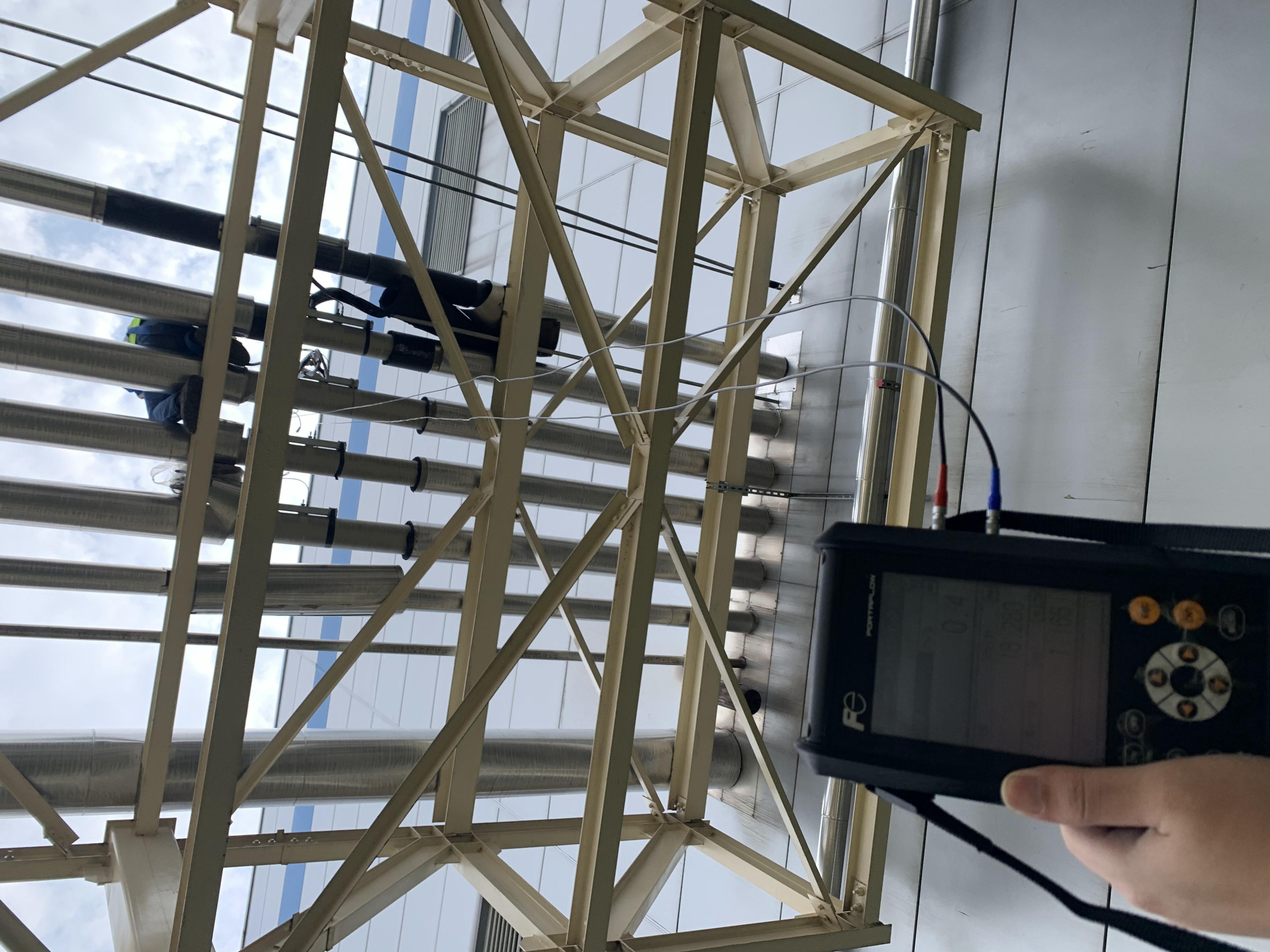Ultrasonic flowmeter is mainly composed of ultrasonic generator, ultrasonic receiver, electronic circuit, flow display, accumulation system. Among them, the ultrasonic generator is mainly used to generate ultrasonic waves and emit them into the fluid; The ultrasonic receiver is mainly used to receive ultrasonic waves after passing through the fluid; After the ultrasonic wave is received, the flow is transmitted to the display screen in the form of an electrical signal after being amplified and converted by the electronic circuit. The cumulative system completes the cumulative calculation of traffic. What are the factors that may cause the error of the ultrasonic flowmeter?
1. Pipeline Factors
(1) Length of Straight Pipe Section
According to the requirements of the instrument, the standard working condition of the straight pipe section is that there are more than 10 times and 5 times the pipe diameter on the upper and lower reaches of the flowmeter. In the actual energy efficiency test, the test conditions often fail to meet the requirements of the standard straight pipe section, and it is difficult to find the ideal test location. The error under standard working conditions is set to be low. When the length of the upstream straight pipe section is fixed, the change of the downstream straight pipe section length has little influence on the error of the flowmeter. Under the condition that the length of the downstream straight pipe section is fixed, the change of the length of the upstream straight pipe section has a great influence on the error of the flowmeter. When the length of the straight pipe section of the upstream pipeline is more than 3 times the diameter and the length of the downstream straight pipe is more than 1 times the diameter, the relative error is basically less than 1%, which can basically meet the accuracy requirements of the field test.
(2) Pipe Material
The ultrasonic flowmeter should be manually recorded by the tester before the test. During the test, the wrong selection of pipe material parameters will cause the calculation error of sensor probe installation distance L and the error of the incidence Angle θ of the sound beam. If the actual sound velocity of the material is less than the recorded sound velocity (for example, the plastic pipe is recorded as galvanized steel pipe), the measurement result is larger, and the opposite is smaller. When the material setting error is serious, the sensor can not even receive the signal, so that the ultrasonic flowmeter can not read.
(3) Pipe Lining
In the actual test, it was found that the pipe lining has a significant impact on the reading of the ultrasonic flowmeter, mainly because the lining of the pipe changes the transmission rate of the sound wave, so the material of the lining should be accurately input when measuring. In addition, scaling inside the pipe causes changes in the thickness of the pipe wall, which will also affect the measurement accuracy. If the scale on the inner wall of the pipeline is relatively uniform and the signal is basically normal, the scale on the inner wall of the pipeline can be regarded as the lining and a certain compensation can be made to reduce the measurement error.
2. The Liquid State in the Pipeline
If the fluid in the pipe is turbulent, dissatisfied, miscible, or the temperature is too high, the measurement results will be inaccurate. Turbulent flow can lead to unstable measurement results and large reading ranges, making it impossible to accurately measure the liquid flow rate in the tube. When the liquid in the pipe is not satisfied with the pipe, there are a lot of bubbles in the pipe, and the bubbles in the pipe will reflect or attenuate the ultrasonic signal, which will bring errors to the measurement. Bubbles generally exist above the pipeline, so the sensor is generally installed at a 45° Angle to the horizontal plane to reduce the impact of bubbles on ultrasonic signals. When the fluid is miscible, its density is difficult to determine, resulting in incorrect parameter Settings, no indication of the instrument or the value is far from the true value.
3. Other Factors
In the actual test, it will be found that there are smaller but not negligible factors, such as vibration noise, coupling type, sensor installation method, etc. If there is ultrasonic noise in the fluid, and the frequency of the noise is consistent with the operating frequency range of the ultrasonic flow meter, it will make the transducer unable to detect and distinguish the normal working ultrasonic pulse signal, resulting in the flow meter reading error or stop metering. Therefore, in the actual test, the surrounding environment should be fully considered to avoid the impact of various types of vibrating equipment such as compressors on the flow meter. The use of coupler will directly affect the strength of the ultrasonic signal, good coupler makes the ultrasonic signal more stable, can reduce the loss of the ultrasonic signal, and reduce the influence of the roughness of the outer wall of the pipeline on the measurement accuracy.

 沪公网安备31011502401909
沪公网安备31011502401909